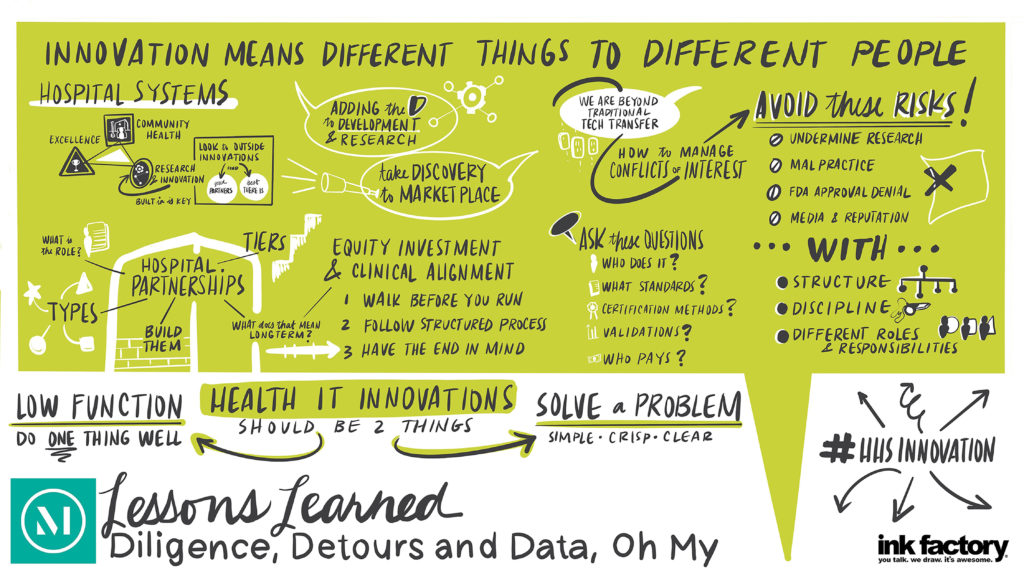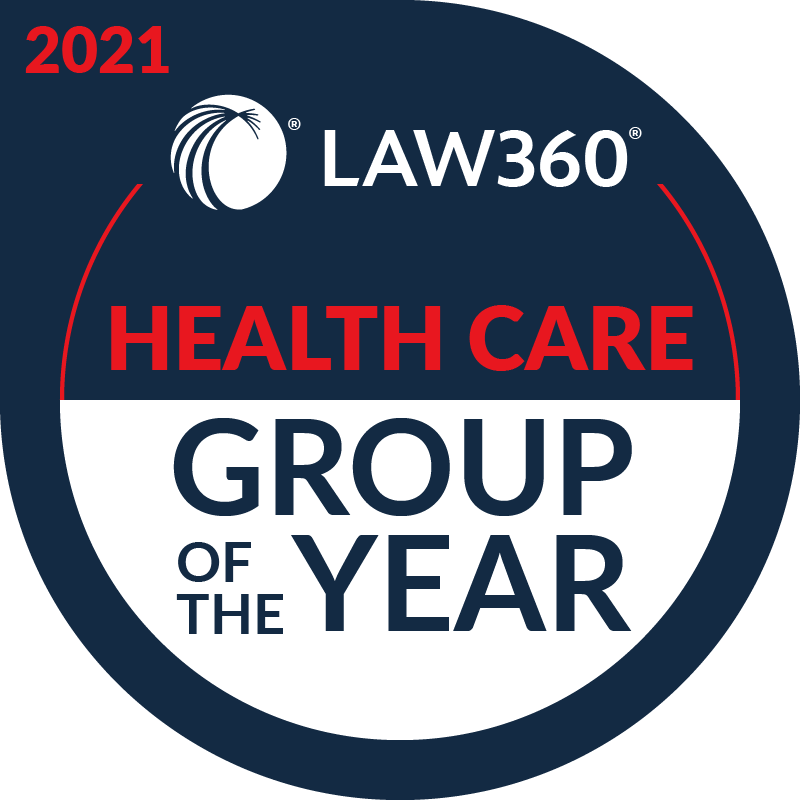
Industry leaders shared first-hand lessons learned from their work on recent innovation related projects. We covered a range of case studies, highlighting lessons learned around mission alignment, conflicts of interest, diligence considerations, data ownership and de-identification, and strategies for protecting a minority investor.
Below are the top takeaways for Hospital and Health System Innovation Summit: Lessons Learned: Diligence, Detours and Data, Oh My, click here to access the full webinar.
Mission Alignment
It is essential for a hospital and health systems to adopt a formal innovation strategic
plan that aligns with its overall strategic mission and vision and clearly articulates it
specific innovation goals and prioritizes focus areas. Hospital and health systems
pursue innovation initiatives largely to support the clinical mission and drive revenue
growth and diversification. “I think that alignment with the strategic mission of the
organization is key because that really drives and helps shape the culture of innovation
as an organization. We define innovation in terms of in three buckets, the research
based, hospital based and external or open innovation,” said Kolaleh Eskandanian,
Vice President and Chief Innovation Officer, Children’s National. “So research based
is the traditional model of a transfer, to identify inventions in the labs and help with the
translation of that discovery to the market space.”
Partnerships are Essential Partnerships and Drive and Shape Innovation.
There is widespread recognition that today’s complex, multi-dimensional and
technology-driven innovation requires partnerships and collaborations among
stakeholders who bring different resources and expertise to the effort. Very rarely, if
ever, can any single stakeholder provide all the ingredients and resources. However,
picking the right partners and the right partnership/collaboration approach is key. “I
think a key step is figuring out what are the role of partnerships. And then thinking
about what that portfolio looks like over time and how it contributes to innovation,” said
Mai-Tal Kennedy, Principal, Vantage Partners. “What types of partnerships you’re
going to want to have in your innovation center, and then how you build to be able to
meet the needs of those relationships.”
Understand Possible Conflicts of Interest
Conflicts of interest must be evaluated at the front end and continuously revisited and
re-evaluated during the full life cycle of the innovation, from early research &
development and design and implementation of co-investment vehicles through
commercialization and deployment in the hospital/health system’s clinical and
operational setting. “The potential for conflicts in commercialization of home grown
innovation can be particularly challenging and complex if investment interests,
royalties and compensation arrangements exist between and among the hospital and
health systems, its officers and directors (and/or their families), and employed and
voluntary members of the medical staff,” said Bernadette Broccolo, Partner,
McDermott Will & Emery. Failure to properly identify, assess and manage conflicts can
undermine the integrity of research data supporting commercialization, which in turn
can result in denial or withdrawal of FDA pre-market approval, create research subject
and patient safety risks (and associated liability), lead to false claims liability and civil
money penalties in connection with the submission of claims for reimbursement for the
innovation by government reimbursement programs. An equally important and very
real consideration is that failure to manage conflicts is of great interest to the media
and the plaintiff’s bar and can also create significant reputation and public relations risk
not only for a hospital and health system but also for other stakeholders as well.
Oversight of potential conflicts in innovation by an independent committee with board
authority has proven to be an effective step in achieving a disciplined and effective
conflict of interest management plan.
Data Strategy Supporting Innovation
Robust, complex data of various types is one of the most valuable assets hospitals
and health systems bring to the innovation table. “Many innovation partnerships begin
as a data collaboration. One challenge is making sense of the data because most
innovation initiatives depend on the aggregation and analysis of a lot of data coming
from a lot of different sources and in various forms. Contributing or licensing that data
to support the innovation endeavor also presents significant privacy compliance
challenges that require careful planning at the outset and throughout the entire
innovation life cycle, not the least of which is the HIPAA prohibition on the sale of
identifiable data,” said Bernadette Broccolo, Partner, McDermott Will & Emery. An
essential ingredient for managing the privacy risk will be development of an effective
and sustainable de-identification strategy. Key due diligence and contracting
questions in that regard include what de-identification method will be used, whether it
meets HIPAA and other application de-identification standards, who is going to deidentify
the data, whether and how often the de-identification will need to be
revalidated, who will be the cost, and who bears the risks associated with
impermissible re-identification.
Health IT Solutions Need to Focus on Problems to Solve
Emerging health technology companies often fail to make clear what problems they
are trying to solve. To be successful, it needs to be clear what problem you want to
solve and you need to be adept at convincing health systems they want to buy your
solution. “Where they fall down is going too many directions simply saying, well, our
solution can do that and it could do that and it could do that,” said Adam Gale,
President, KLAS. “It’s really seeing these emerging technology companies not make a
clear bet on what they’re really going to do, what problems they’re really going to
solve, and then they just end up, I’ll say mushy – they do one thing over here and they
do another thing over here with a different provider, and they don’t do any of them as
well as they could or should.”
To catch up on all of the panels in our Hospital and Health System Innovation Summit, please click here.






